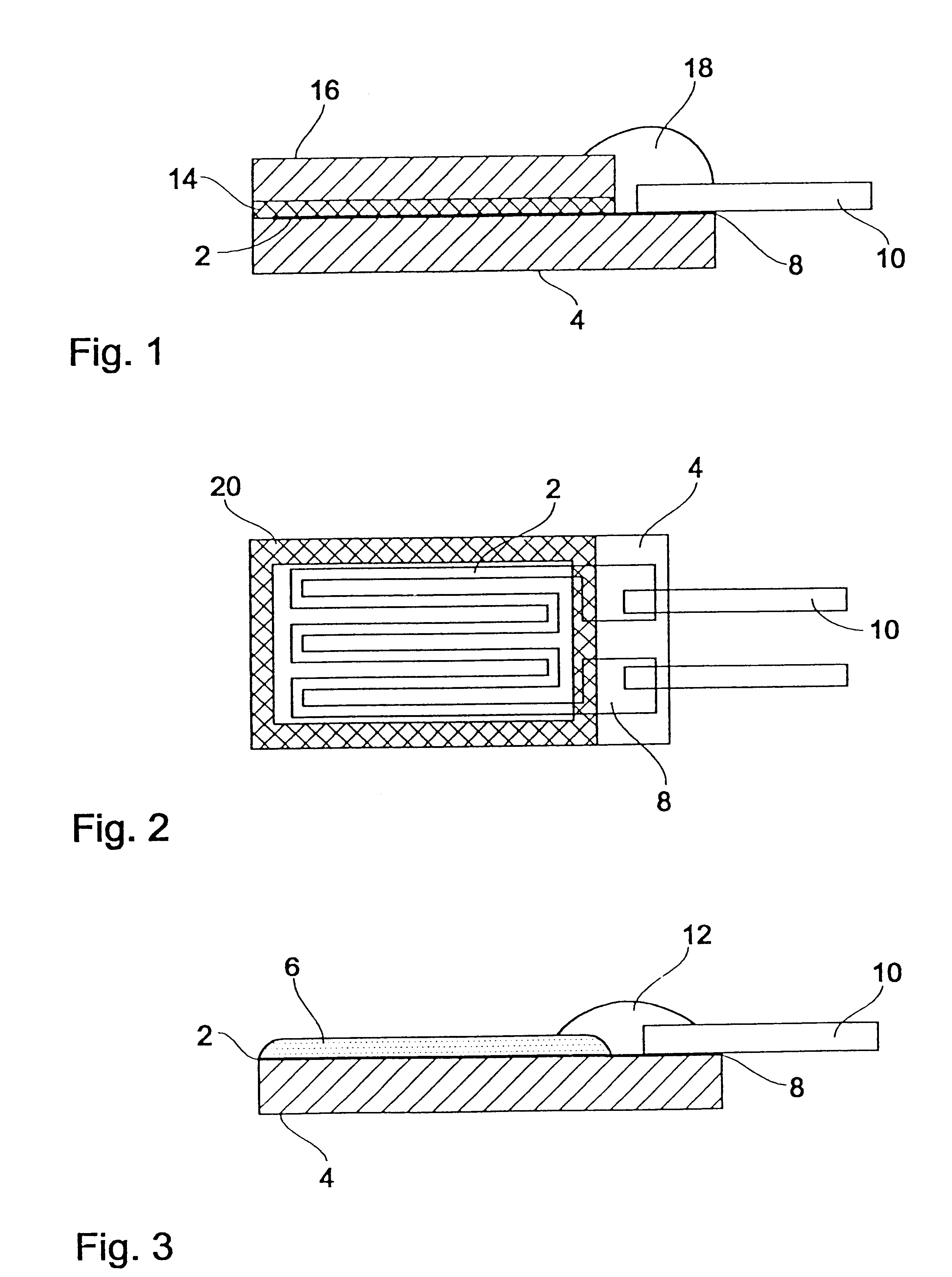Platinum temperature sensor and its method of production
a temperature sensor and temperature sensor technology, applied in the field of platinum temperature sensors, can solve the problems of inability to meet all requirements, inability to adjust the resistor, and inability to meet the stability of the sensor,
- Summary
- Abstract
- Description
- Claims
- Application Information
AI Technical Summary
Benefits of technology
Problems solved by technology
Method used
Image
Examples
Embodiment Construction
First, referring to FIG. 1, a first embodiment of a platinum temperature sensor according to the present invention is described in detail. The platinum temperature sensor comprises a ceramic substrate that consists of Al.sub.2 O.sub.3 in preferred embodiments on which a structured platinum layer is applied defining a platinum resistor trace 2 and connecting areas 8. A lead wire 10 can be electrically conductive connected with the connecting areas 8. A ceramic cover layer 16 which is also made from Al.sub.2 O.sub.3 in the preferred embodiments of the present invention is applied on the surface of the ceramic substrate 4 on which the platinum resistor trace is provided via a connecting layer 14, which consists also of Al.sub.2 O.sub.3 in the preferred embodiments of the present invention. Further, in FIG. 1 a glass ceramic 18 is illustrated that serves for fixing the lead wire.
It is preferable to use the same material for the cover layer 16 that is used for the ceramic substrate 4. Ho...
PUM
 Login to View More
Login to View More Abstract
Description
Claims
Application Information
 Login to View More
Login to View More - R&D
- Intellectual Property
- Life Sciences
- Materials
- Tech Scout
- Unparalleled Data Quality
- Higher Quality Content
- 60% Fewer Hallucinations
Browse by: Latest US Patents, China's latest patents, Technical Efficacy Thesaurus, Application Domain, Technology Topic, Popular Technical Reports.
© 2025 PatSnap. All rights reserved.Legal|Privacy policy|Modern Slavery Act Transparency Statement|Sitemap|About US| Contact US: help@patsnap.com


